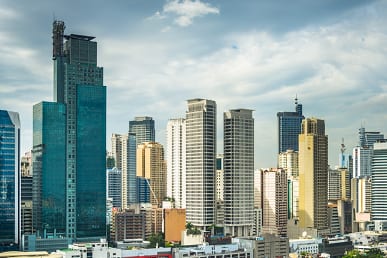Summary
Under the Immigration and Nationality Act, a child refers to an unmarried person under 21 years of age. However, visa applications often have long waiting times — with some cases even taking up to 20 years. As a result, some children get aged out of the system. That is, they turn 21 before their application is granted, so they’re no longer considered a child under the law. They can also no longer immigrate to the country or adjust their status.
Under the Immigration and Nationality Act, a child refers to an unmarried person under 21 years of age. However, visa applications often have long waiting times — with some cases even taking up to 20 years. As a result, some children get aged out of the system. That is, they turn 21 before their application is granted, so they’re no longer considered a child under the law. They can also no longer immigrate to the country or adjust their status.
The Child Status Protection Act (CSPA) is designed to keep immigrant families together by ‘freezing’ the child’s age as long as certain requirements are met. Freezing means that they’d still retain their status as a child even after they become adults so they can successfully enter the U.S. with their other family members, or perhaps reunite with members of their family who are already legal residents in the country.
If you have a pending visa application, here are some of the things you need to know about the CSPA.
How Does the CSPA Work?
The CSPA offers several options for parents who wish to bring their children with them into the country, including the following:
- U.S. citizen parents who file a Petition for Alien Relative (Form I-130) before the child turns 21 freeze their age the moment the petition is filed. They won’t age out of the process, even if they’re no longer 21 by the time a decision is made.
- Similarly, if the petitioning parent is a permanent resident who becomes a naturalized citizen before the child turns 21, the child’s age is frozen at the moment of naturalization.
How Is the CSPA Age Calculated?
Keep in mind that the law does not change the legal definition of a child. Instead, it uses an alternative method to calculate the applicant’s age to determine whether they’re still considered a child for immigration purposes.
Your CSPA age is calculated by subtracting the time the petition was pending from your age at the time of visa availability. This method essentially involves three steps:
- Determine the age of the child at the time a visa becomes available. The time of visa availability may be one of the two: the approval date of the petition or the first day that the Department of State Visa Bulletin indicates that a visa is available for you.
- Subtract the total time that the petition was pending from the applicant’s age.
- Make sure that the child applied for permanent resident status within a year from the time a visa becomes available.
This formula means that the age at the date of filing a family-based or employment-based visa application is not “locked-in” as it is for “immediate relatives.” A child can still age out of the system even if the application was filed before they turned 21 due to quota delays or visa backlogs.
Is the CSPA Applicable In My Case?
Your child’s classification status is eligible for protection under the CSPA if you are a:
- Derivative asylee, which means that you were petitioned as a child of an immigrant granted asylum status within two years of their admission into the country
- Derivative refugee
- Derivative applicant for the Diversity Immigrant Visa (DV), which is essentially a lottery program for those seeking permanent residence
- Employment-based preference derivative applicant
- Family-based preference principal and derivative applicant
- Violence Against Women Act (VAWA) self-petitioner and derivative applicant of a U.S. citizen
- Immediate relative, such as a child, spouse, or derivative of a widow or widower
In some cases, there’s a chance that a child is already considered a U.S. citizen under the law depending on certain factors such as their birth date or the length of time the parents have been in the country. It’s important to consult with an immigration lawyer to make sure you’re not wasting your time filing a visa application when you’ve already automatically qualified for citizenship.
What Are the Requirements for Eligibility?
You need to meet the following requirements if you want to qualify for the protections and benefits indicated in the CSPA:
- You should be a beneficiary of an approved or pending petition.
- A final decision on an application for an Immigrant Visa should not have been issued before the law’s effectivity date.
- The child should file a petition within one year from the time the visa becomes available. This may be any one of the following: an immigrant visa (DS-260), a following-to-join application (Form I-824), or an application for adjustment of status (Form I-485). Failure to comply with this requirement may lead to the loss of eligibility.
What if I Fail to Comply With the One-Year Deadline?
Generally, that means you’re out of luck. However, in a decision made by the Board of Immigration Appeals, the Board ruled that certain extraordinary circumstances may excuse a delay in filing for a visa application for the child within the one-year deadline.
In determining whether the case involves such extraordinary circumstances, it is advisable to seek the opinion of a knowledgeable immigration attorney.
What Are the Benefits Under the CSPA?
The law was specifically designed to prevent a child from aging out and getting denied or further delayed when applying for residency.
Here are two possible benefits that applicants stand to gain from the CSPA:
- They can request for a re-computation of their age following the calculation method outlined in the CSPA, especially if they’ve already turned 21 years old.
- They can ask for a revocation of the automatic upgrade of preference categories under the law. For instance, an F-2B visa holder may refuse to be upgraded to the F1 category when their parent gets naturalized.
Is the Law Retroactive?
Generally, no. The CSPA became effective when it was signed into law on August 6, 2002.
How Do I Know If My Application Was Denied Due to CSPA?
The United States Citizenship and Immigration Services (USCIS) or U.S. Embassy will state the reason for denial in their written decision.
Ordinarily, visa decisions cannot be appealed. People cannot sue or appeal visa denials in U.S. courts. However, when the case involves the interpretation or the eligibility of the child under the CSPA, the case may involve legal questions that require reconsideration.
If I Was Previously Denied Due To Aging Out, Can I Get My Case Reconsidered?
A motion to reconsider essentially means that you’re asking the court or agency — in this case, the USCIS or U.S. Embassy — to re-examine your case in light of new arguments, an overlooked aspect of the case, or changes in the law. A motion to reopen refers to a request to revisit the case due to new evidence that may have a considerable bearing on the case.
Under the law, USCIS will accept a motion to reconsider or reopen a denied application due to aging out as long as the following things apply:
- The applicant’s CSPA age is below 21 years old.
- The applicant filed the petition for permanent residence within a year after a visa became available.
- The denial was exclusively because the applicant aged out.
Can I Opt-Out of a Preference Category?
Yes. When a citizen or permanent resident petitions a family member with a foreign nationality, the beneficiary will either be classified as an immediate relative or fall under the preference category system. The former refers to unmarried children, spouses, and parents of U.S. citizens. In the latter, applicants are separated into the following preference categories:
- Family One (F1) Preference: Unmarried adult sons and daughters of U.S. citizens
- Family Two (F2) Preference: Spouse and children (F-2A), and unmarried adult children (F-2B) of permanent residents
- Family Three (F3) Preference: Married sons and daughters of U.S. citizens
- Family Four (F4) Preference: Brothers and sisters, as well as their spouses and children, of U.S. citizens
The number of immigrants allowed under the preference categories is limited by statute. In recent years, for instance, only 480,000 immigrants were approved under the preference system. Waiting time varies for each category, and applicants can choose to opt-out of a category if they qualify for one with a shorter waiting period.
What Is the Expedite Aging Out Process?
If one of the dependent children in a family-based or employment-based visa application is about to turn 21, the USCIS typically considers the case a top priority so that a decision is made before the child becomes an adult.
This means that the child, including their parents or siblings, all receive expedited treatment and their cases are decided within a relatively shorter period of time.
What If I Am Married, Divorced, or Widowed?
If you’re a family-based or employment-based preference, VAWA, or DV applicant, you have to stay unmarried to qualify for the CSPA. Married, divorced, or widowed applicants — even if they’re under the age of 21 — are no longer considered children.
How Does the CSPA Apply to Non-Immigrants?
The application of the law is more limited, particularly because each non-immigrant visa type already offers certain protections for applicants. Here are some examples:
- The holder of a K2 visa, which is granted to the child of a non-immigrant who’s a fiancé or fiancée of a U.S. citizen, will still be eligible for a green card as long as they entered the country before they turned 21 years old.
- The holder of a K4 visa, which is granted to the child of a foreign spouse of a U.S. citizen, may be eligible for CSPA since they’re applying as an immediate relative.
Are There Any Common Mistakes I Need to Watch Out for?
Parents often do things that can mess up their child’s CSPA eligibility. Here are some of them:
- Expediting the Approval of the Petition: In certain cases, a lengthy waiting time is better. This is because the longer it takes USCIS to approve an application, the more time can be subtracted from the child’s age. If the process only took 4 months, it means that only 4 months will be subtracted from the child’s age.
- Disregarding the “Within One Year” Requirement: Make sure that you or your parent file your application within one year of the visa’s availability. Remember, CSPA eligibility is a two-step process. The child may be considered as under 21 years of age under the law, but the parent should never forget that there’s a necessary second step: filing a visa application for the child before the one-year limit is up.
- Naturalizing After the Child Turns 21: If the parent waits to naturalize until after their child’s 21st birthday.
Next Steps
Cases involving the CSPA are complex and the rules determining the age of a former minor can be confusing. If you’re wondering how the law applies to your case or if you’re worried that you’ve aged out of the process, the advice and assistance of an experienced and qualified immigration attorney is invaluable.
At Reeves Immigration Law Group, we believe in keeping immigrant families together. Contact us today for a confidential consultation about your case.
Subscribe To Our Newsletter
Locations

Los Angeles
(626) 795-6777

San Francisco
(415) 568-3777

Concord
(925) 310-5080

Philippines
+011 (63) 917-622-2971

China
WeChat (微信) - yimin7788